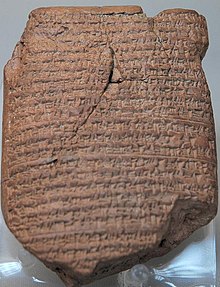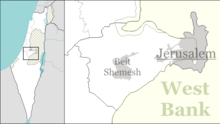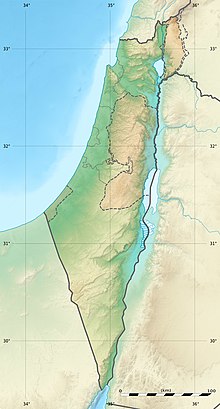
Back حصار القدس (597 قبل الميلاد) Arabic জেরুসালেম অবরোধ (৫৯৭ খ্রিস্টপূর্ব) Bengali/Bangla Eroberung von Jerusalem (597 v. Chr.) German Sitio de Jerusalén (597 a. C.) Spanish Jerusalemgo setioa (k.a. 597) Basque محاصره اورشلیم (۵۹۷ پیش از میلاد) Persian Siège de Jérusalem (597 av. J.-C.) French Pengepungan Yerusalem (597 SM) ID Assedio di Gerusalemme (597 a.C.) Italian 예루살렘 공방전 (기원전 597년) Korean
| Siege of Jerusalem | |||||||
|---|---|---|---|---|---|---|---|
| Part of Judah's revolts against Babylon (601–587 BC) | |||||||
 The siege of Jerusalem is mentioned in the Early Years of Nebuchadnezzar chronicle (ABC 05) | |||||||
| |||||||
| Belligerents | |||||||
| Judah | Neo-Babylonian Empire | ||||||
| Commanders and leaders | |||||||
|
Jehoiakim † Jeconiah | Nebuchadnezzar II | ||||||
| Strength | |||||||
| Much fewer | Unknown | ||||||
| Casualties and losses | |||||||
| Many slain, others taken to captivity | Unknown | ||||||
Location within Jerusalem | |||||||
| Part of a series on |
| Jerusalem |
|---|
 |
The siege of Jerusalem (597 BC) was a military campaign carried out by Nebuchadnezzar II, king of the Neo-Babylonian Empire, in which he besieged Jerusalem, then capital of the Kingdom of Judah. The city surrendered, and its king Jeconiah was deported to Babylon and replaced by his Babylonian-appointed uncle, Zedekiah. The siege is recorded in both the Hebrew Bible (2 Kings 24:10–16) and the Babylonian Nebuchadnezzar Chronicle.
In 601 BC, Nebuchadnezzar II unsuccessfully attempted to take Egypt and was repulsed with heavy losses. Jehoiakim—the king of Judah—seized this opportunity to revolt against Babylonian rule, taking a pro-Egyptian position, despite the strong remonstrances of the prophet Jeremiah.[1][2][3] The circumstances of Jehoiakim’s death are not clear. He was succeeded by his young son, Jeconiah.[4][5]
The Babylonians besieged Jerusalem, and in March 597 BC the city surrendered. Jeconiah, his court and other prominent citizens and craftsmen, were deported to Babylon.[6] This event is considered to be the start of the Babylonian captivity and of the Jewish diaspora. Jeconiah's uncle, Zedekiah, was installed as vassal king of Judah.
A decade later, Zedekiah launched another rebellion against the Babylonians, which was brutally crushed by Nebuchadnezzar II. In 587 BC, a second siege of Jerusalem culminated in the destruction of the city and Solomon's Temple, bringing an end to the Kingdom of Judah.[1]
- ^ a b Bickerman, E. J. (January 2007). Nebuchadnezzar And Jerusalem. Brill. pp. 961–974. ISBN 978-90-474-2072-9.
- ^ Malamat, A. (1975, January). The twilight of Judah: in the Egyptian-Babylonian maelstrom. In Congress Volume Edinburgh 1974 (pp. 123-145). Brill.
- ^ Cite error: The named reference
:0was invoked but never defined (see the help page). - ^ Smit, E. J. (1994). "So how did Jehoiakim die?". Journal for Semitics. 6 (1): 46–56. hdl:10520/AJA10318471_285.
- ^ Begg, C. (1996). "The end of King Jehoiakim: the afterlife of a problem". Journal for Semitics. 8 (1): 12–20. doi:10.10520/AJA10318471_366 (inactive 31 January 2024).
{{cite journal}}: CS1 maint: DOI inactive as of January 2024 (link) - ^ Cite error: The named reference
:3was invoked but never defined (see the help page).
© MMXXIII Rich X Search. We shall prevail. All rights reserved. Rich X Search

